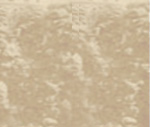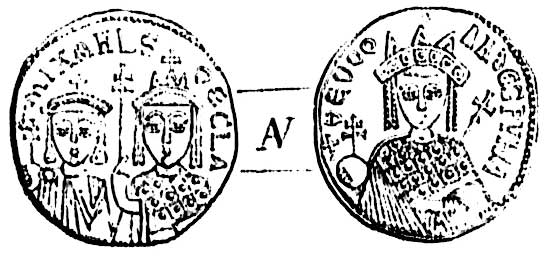 |
 |
 |
|
||
| main :: biography :: texts :: manuscripts :: photographs :: drawings :: squeezes :: publications :: about | ||
|
Year of 1889 ...
IN CHERSONESOS
Reconnaissances started on the soil of ancient Chersonesos in 1888, in its west area, at the sea shore, and continued in 1889, too, towards unearthed ancient street, under the supervision of the employee of the Archaeological Commission, member of the Imperial Odessa Society of <History> and Antiquities, K.K.Kostsyushko-Valyuzhinich. There, as well as during yester-year reconnaissances in the east area of Chersonesos, under the level of the upper, Byzantine city, remains of walls and multitude of covered with earth and stone cisterns of the lower city were uncovered. Some cisterns were not covered, but the wall of the upper city goes above them, and this proves that the latter, having a water pipe (its direction has been studied as long as commodore Pyshnov’s hamlet), did not need so expensive constructions, and used these rarely, to store grain and salt fish only. As the cisterns were covered when building the upper city, which was highly populated and valued every spot of land, investigation of these was of special interest, and the finds – mainly wreckage of marble statues, terracotta figures, and thin clay pottery covered with dark glaze – date exclusively to the time when the ancient city existed at this place, in the Greek and Roman period. Fragments of marble slabs with Greek and Latin inscriptions appear in cisterns as rare exception; these were used by the upper city dwellers as building material and for churches preferentially. One of the rooms had an exit to the street and was a stock of metal artifacts: there were an iron church candelabrum, 5 fragments of anchors, 3 ploughshares, 147 big copper fishhooks, multitude of broken iron artifacts, and 12 silver coin ingots, weighing about ½ pound each were excavated in it. All the finds suffered greatly from fire; the upper city undoubtedly became the victim of that: it is proved by two-year-long reconnaissances that were made in different areas of Chersonesos.
In the same situation, considerable number of coins is found: 56 Chersonesan, of Graeco-Roman period; 536 Chersonesan of Byzantine <period> 373 of Roman and Byzantine emperors, including one, very rare, gold piece of empress Theodora and her children Michael and Thecla (s<ee> attach<ed> Fig. No. 6) ; altogether 1285 coins are found. A part of these has been described by A. V. Oreshnikov in the 7th volume of Materialy po arkheologii Rossii <Materials for the archaeology of Russia> issued by the Archaeological Commission. Very important discoveries were made in the south-west area of the city, outside the monastery buildings. Here, in the straight direction from s<outh> to n<orth> and at an insignificant distance from each other, remains of three churches have been uncovered: one is large, completely destroyed, another is small, with remains of fresco paintings on the chancel vault, and the third is also large, with mosaic floors and multitude of marble columns, capitals and slabs. This beautiful church was destroyed simultaneously with other churches in Chersonesos; it bears traces of a great fire on its mosaic floors, and was reconstructed in relatively very late period but in small scale only and with most poor means. During this latest re-building, mosaic floors, the only amongst the floors of Chersonesian churches because of the variety of symbolic images, were left without attention: miserable walls of fine stones with clay were erected above them, with laid inside fragments of marble columns and capitals that appeared to be unnecessary; 5 sepulchres were arranged inside the small church, above the mosaic floor, and 8 in the south chapel. At the south-east side, the church was annexed by arched sepulchral church , in which huge number of human bones, and, amidst these, glass bracelets of various size, small bronze buttons, and bronze reliquary cross were found.
Marble capital with images of four ram’s heads at the corners and two eagles and two small birds on each side, (see fig. No. 7) , and small marble tetrahedral column from iconostasis, with Byzantine inscription in two vertical lines, unfortunately incomplete one, as the beginning and the end of the inscription are missing in it, are the find of a special interest. To conserve the above-mentioned mosaic floors, the Imperial Archaeological Commission acknowledged it necessary to raise walls around the floors, arrange an iron roof, doors and windows, and to keep watchman at the ancient church during winter season, when no reconnaissance was made. |
| ©National Preserve of Tauric Chersonesos . 2007 - 2026 |

